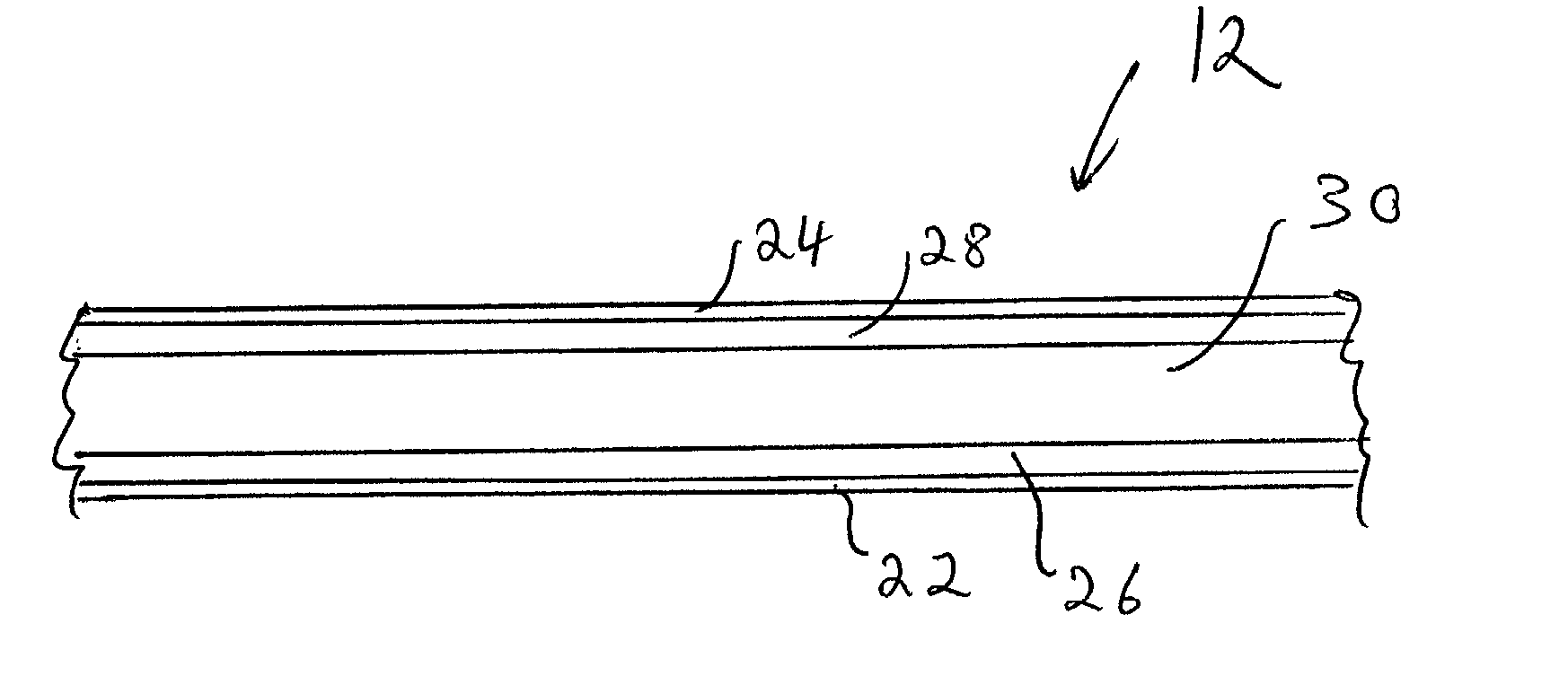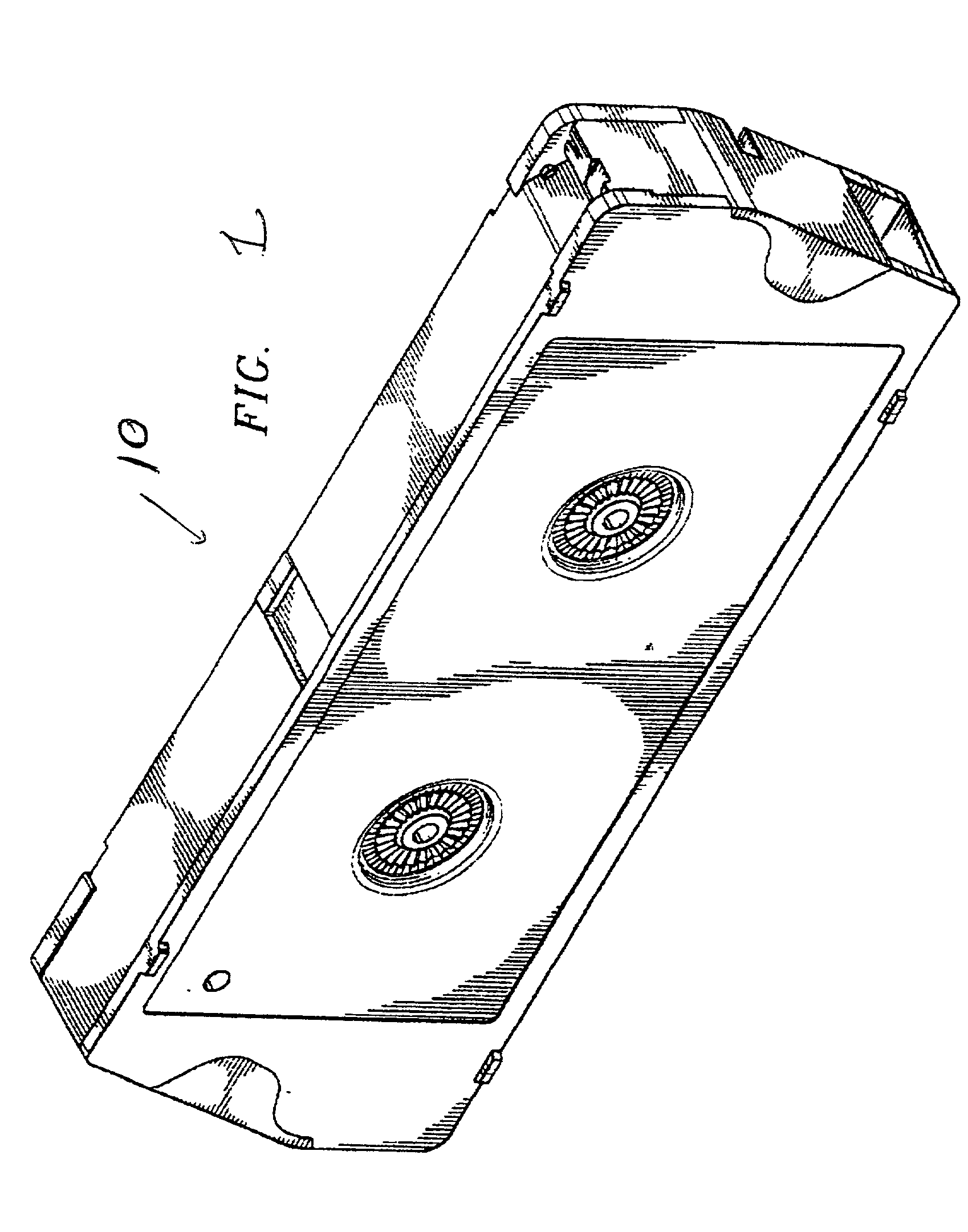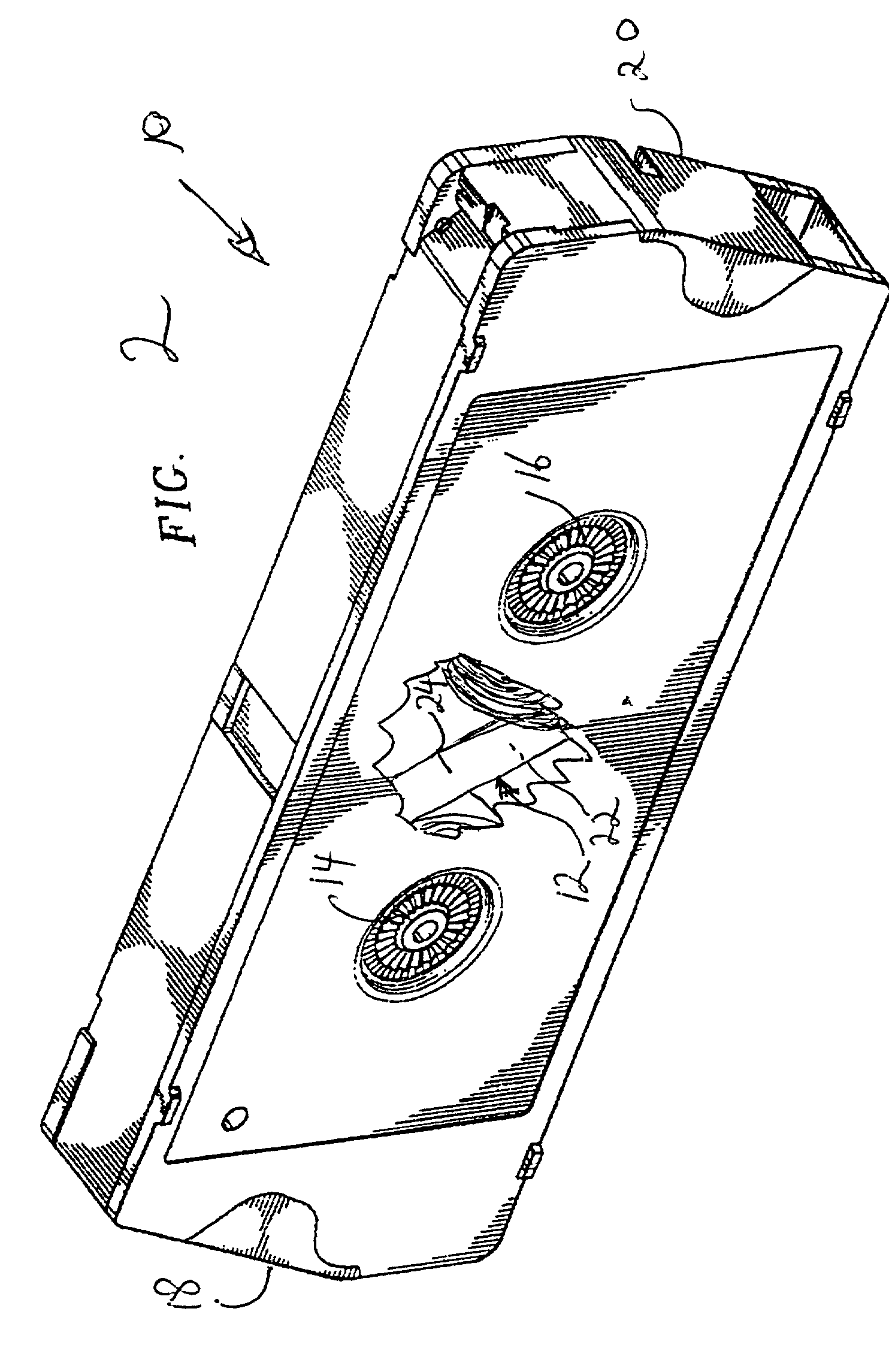Dual-surface flexible magnetic tape
a flexible magnetic tape and dual-surface technology, applied in the field of magnetic media for recording, can solve the problems of reducing the volumetric storage capacity of the tape, unable to meet the needs of dual-surface recording, and unable to meet the needs of recording, etc., to achieve the effect of dual-surface recording
- Summary
- Abstract
- Description
- Claims
- Application Information
AI Technical Summary
Benefits of technology
Problems solved by technology
Method used
Image
Examples
Embodiment Construction
[0021] The heart of this invention is in the discovery that the combination of judiciously selected coercivity values in the magnetic recording layers and in the underlayers coated over a conventional tape substrate make it possible to produce thin dual-surface flexible tapes that are essentially free of print-through and contact-recording effects. Chromium dioxide possesses properties that render it suitable for this application. With the exception of the disclosed novel combinations of coercivity parameters, which have been found to be uniquely critical for implementing the invention, the physical structure and other characteristics of the dual-surface magnetic tape of the invention may be the same as those of conventional tape components. Thus, it is envisioned that the magnetic material of the invention would be applied in conventional manner to each side of a conventional tape substrate suitable for use in a magnetic tape cartridge, such as poly(ethylene terephthalate) (PET) or...
PUM
| Property | Measurement | Unit |
|---|---|---|
| coercivity | aaaaa | aaaaa |
| coercivity | aaaaa | aaaaa |
| coercivity | aaaaa | aaaaa |
Abstract
Description
Claims
Application Information
 Login to View More
Login to View More - R&D
- Intellectual Property
- Life Sciences
- Materials
- Tech Scout
- Unparalleled Data Quality
- Higher Quality Content
- 60% Fewer Hallucinations
Browse by: Latest US Patents, China's latest patents, Technical Efficacy Thesaurus, Application Domain, Technology Topic, Popular Technical Reports.
© 2025 PatSnap. All rights reserved.Legal|Privacy policy|Modern Slavery Act Transparency Statement|Sitemap|About US| Contact US: help@patsnap.com



